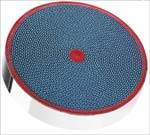No. 10 - Desiccant Dryers
Still considered the “gold standard” for drying hygroscopic resins—those that absorb atmospheric moisture—desiccant dryers first emerged in the late 1950s, when Carl Whitlock, founder of Application Engineering Corp. (AEC), developed the first regenerative dryer using silica gel as the desiccant.
Still considered the “gold standard” for drying hygroscopic resins—those that absorb atmospheric moisture—desiccant dryers first emerged in the late 1950s, when Carl Whitlock, founder of Application Engineering Corp. (AEC), developed the first regenerative dryer using silica gel as the desiccant. Until then, “The only material dryer on the market was the Thoreson McCosh mechanical refrigerant type,” recalls Conair founder and chairman John Reib in his 1996 memoir, The Making of Conair. “That unit would not achieve low enough dewpoints for some of the engineering-grade materials being developed.” Reib says the silica gel presented many problems, which were eventually solved when R&D assistance from the Linde Div. of Union Carbide led to the use of a molecular-sieve desiccant, which has remained the standard.
The development of desiccant dryers was driven by the increasing popularity of hygroscopic engineering resins. The first companies to introduce desiccant dryers for plastics adapted twin-tower designs that had been used previously in other industries.
In 1969, Conair began an association with Dr. Roderich Graeff of Darmstadt, Germany, who had developed a continuously rotating carousel dryer that he claimed could reduce the amount of energy consumed in drying and produce a more stable dewpoint than the twin-tower models could. Conair further improved the design, converting it from a continuously rotating arrangement to the now-common indexing configuration. The indexing carousel made it possible to use a closed-loop air system for post-regeneration desiccant cooling, whereas previously, the hot, freshly regenerated desiccant was cooled with ambient air, which had the effect of pre-loading it with moisture and immediately reducing its effectiveness.
One of the highlights of NPE 1979 was desiccant dryers engineered specifically for PET, one of the most challenging materials to dry. PET dryers were introduced at NPE by Foremost, Thoreson McCosh, and Conair.
By NPE 1985, microprocessor controls were featured on most new auxiliary equipment, including dryers supplied then by companies such as AEC, Universal Dynamics, Conair, Foremost, Novatec, and Thermal Care/Mayer. Since then, desiccant dryers have further advanced in compactness, drying controls, and energy savings. They account for at least 80% of the plastic resin dryers in use.
A novel type of desiccant dryer was first introduced to plastics in the mid-’90s by Matsui America. It uses a “honeycomb” desiccant rotor, which provides continuous closed-loop drying. Different sections of the rotating desiccant wheel are continually exposed to process air, regeneration, or cooling. This technology is also currently offered by Bry-Air, Comet Automation, Conair, and Wittmann.
Another recent development is a type of compressed-air dryer with a moisture-removal membrane. This membrane is not a true desiccant, but rather a filter or “screen” that blocks water molecules from passing through. It needs no regeneration. It’s available from at least eight suppliers.
Since 2000, a challenge to desiccant drying has also been mounted by new vacuum-type dryers, currently sold only by Maguire and Matsui. Their capabilities relative to desiccant dryers are still the subject of some dispute.










.png;maxWidth=300;quality=90)



